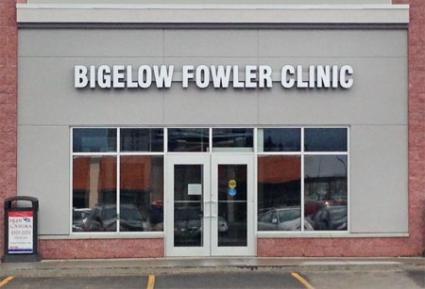What is acute bronchitis?
Bronchitis is swelling and irritation in the air passages that connect the windpipe
with the lungs. With acute bronchitis you usually have a cough that produces
phlegm, and pain behind the breastbone when you breathe deeply or cough.
How does it occur?
Bronchitis often occurs with viral infections of the respiratory tract, such as colds
and flu. Bacterial infections may also cause acute bronchitis. It may occur with
childhood illnesses such as measles and whooping cough. Attacks are most
frequent during the winter and when air pollution is high. Infants, young children,
the elderly, smokers, and people with lung and heart diseases are most likely to
get acute bronchitis.
Symptoms may include:
- a deep cough that produces yellowish or greenish phlegm
- pain behind the breastbone when you breathe deeply or cough
wheezing - feeling short of breath
- fever
- chills
- sore muscles
- headache
How is it diagnosed?
Your health care provider will examine you and ask about your symptoms. You
may have tests, such as:
- a test of phlegm to look for bacteria
- chest x-ray
- blood tests.
How is it treated?
Acute bronchitis often does not require medical treatment. Resting at home and
drinking plenty of fluids to keep the mucus loose may be all you need to do to get
better in a few days. If your symptoms are severe or you have other health
problems (such as heart or lung disease or diabetes), you may need to take
antibiotics.
How long will the effects last?
Most of the time acute bronchitis clears up in a few days. Your cough may slowly
get better in 1 to 2 weeks. It may take you longer to recover if:
- You are a smoker
- You live in an area where air pollution is a problem
- You have a heart or lung disease
- You have any other continuing health problems
How can I take care of myself?
- following the full treatment your health care provider recommends
- using a vaporizer, humidifier, or steam from hot water to add moisture to the air drinking plenty of liquids
- taking cough medicine if recommended by your health care provider
- resting in bed
- taking aspirin or acetaminophen to reduce fever and relieve headache and muscle pain (no one under age 21 should take aspirin because of the risk of Reye’s syndrome)
- eating healthy meals.
Call your health care provider if:
- You have trouble breathing
- You have a fever over 101 F (38.3 C)
- You cough up blood
- You don’t feel better in 3 days
- You have any symptoms that concern you
How you can reduce the risk of getting a respiratory infection:
- Do not smoke
- Wash your hands often
- Get regular exercise
- Eat healthy foods



